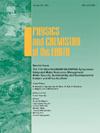东非潘加尼盆地时空季节和年度降雨趋势及变化评估
IF 3
3区 地球科学
Q2 GEOSCIENCES, MULTIDISCIPLINARY
引用次数: 0
摘要
尽管原地降雨量数据仍然是最准确的,但东非的雨量计网络密度却很稀疏。它缺乏连续性,因此不足以准确评估降雨的空间和长期趋势及变化。因此,通常使用降雨遥感数据来代替地面站数据。本研究评估了遥感数据与坦桑尼亚潘加尼盆地地面观测数据相比,在评估季节性和年度降雨趋势和变化方面的能力和局限性。分析了气候灾害小组红外降水站(CHIRPS)和 23 个地面站的数据,包括 1990 年至 2022 年的时间序列。采用 Mann-Kendall 检验法进行了趋势分析,并采用森斜率法确定了降水的空间分布。CHIRPS 年降水量与站点降水量数据显示出良好的一致性,NSE、R2、斜率、Pbias、MAE 和 RMSE 值分别为 0.84、0.92、0.92、7.55%、297.4 和 397.1。观测站数据的变异系数显示年降雨量的变异性极大,超过 30%,而 CHIRPS 数据显示变异性适中,介于 20% 至 30% 之间。站点数据和遥感数据都显示,至少有 10 个站点的年降雨量和季节降雨量呈上升趋势。然而,Maji Moshi、Kiungu Primary School、Segera C. Tank 和 Kibong'oto 等站点的 CHIRPS 数据显示其降雨量呈上升趋势,而站点数据则显示其降雨量呈显著下降趋势。本文章由计算机程序翻译,如有差异,请以英文原文为准。
Spatial-temporal seasonal and annual rainfall trends and variability assessment in the Pangani Basin, East Africa
Although in situ rainfall data remains the most accurate, the gauge network density in East Africa is sparse. It lacks continuity, thus making it inadequate to assess the spatial and long-term rainfall trend and variability accurately. As such, rainfall remote sensing data are normally used instead of ground station data. This study evaluates the capabilities and limitations of remote sensing data compared with ground-based observations in Tanzania's Pangani Basin in assessing the seasonal and annual rainfall trends and variability. Data from the Climate Hazards Group Infrared Precipitation with Stations (CHIRPS) and twenty-three ground stations were analyzed, comprising a time series from 1990 to 2022. Trend analysis was conducted using the Mann-Kendall test, while the spatial distribution of precipitation was determined using Sen's slope method. CHIRPS annual rainfall showed good agreement with station rainfall data, with NSE, R2, slope, Pbias, MAE, and RMSE values of 0.84, 0.92, 0.92, 7.55%, 297.4, and 397.1, respectively. The coefficient of variation from station data indicated extreme variability, exceeding 30% for annual rainfall, while CHIRPS data showed moderate variability, ranging from 20% to 30%. Both station data and remote sensing data showed an increasing trend for annual and seasonal rainfall at least 10 stations. However, stations like Maji Moshi, Kiungu Primary School, Segera C. Tank, and Kibong'oto exhibited an increasing trend for vuli rainfall with CHIRPS data, while station data indicated a significant decreasing trend.The study highlights the necessity for calibration and validation to avert misinterpretations in climate trend analyses, especially at the basin level.
求助全文
通过发布文献求助,成功后即可免费获取论文全文。
去求助
来源期刊

Physics and Chemistry of the Earth
地学-地球科学综合
CiteScore
5.40
自引率
2.70%
发文量
176
审稿时长
31.6 weeks
期刊介绍:
Physics and Chemistry of the Earth is an international interdisciplinary journal for the rapid publication of collections of refereed communications in separate thematic issues, either stemming from scientific meetings, or, especially compiled for the occasion. There is no restriction on the length of articles published in the journal. Physics and Chemistry of the Earth incorporates the separate Parts A, B and C which existed until the end of 2001.
Please note: the Editors are unable to consider submissions that are not invited or linked to a thematic issue. Please do not submit unsolicited papers.
The journal covers the following subject areas:
-Solid Earth and Geodesy:
(geology, geochemistry, tectonophysics, seismology, volcanology, palaeomagnetism and rock magnetism, electromagnetism and potential fields, marine and environmental geosciences as well as geodesy).
-Hydrology, Oceans and Atmosphere:
(hydrology and water resources research, engineering and management, oceanography and oceanic chemistry, shelf, sea, lake and river sciences, meteorology and atmospheric sciences incl. chemistry as well as climatology and glaciology).
-Solar-Terrestrial and Planetary Science:
(solar, heliospheric and solar-planetary sciences, geology, geophysics and atmospheric sciences of planets, satellites and small bodies as well as cosmochemistry and exobiology).
 求助内容:
求助内容: 应助结果提醒方式:
应助结果提醒方式:


